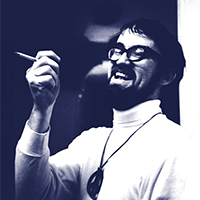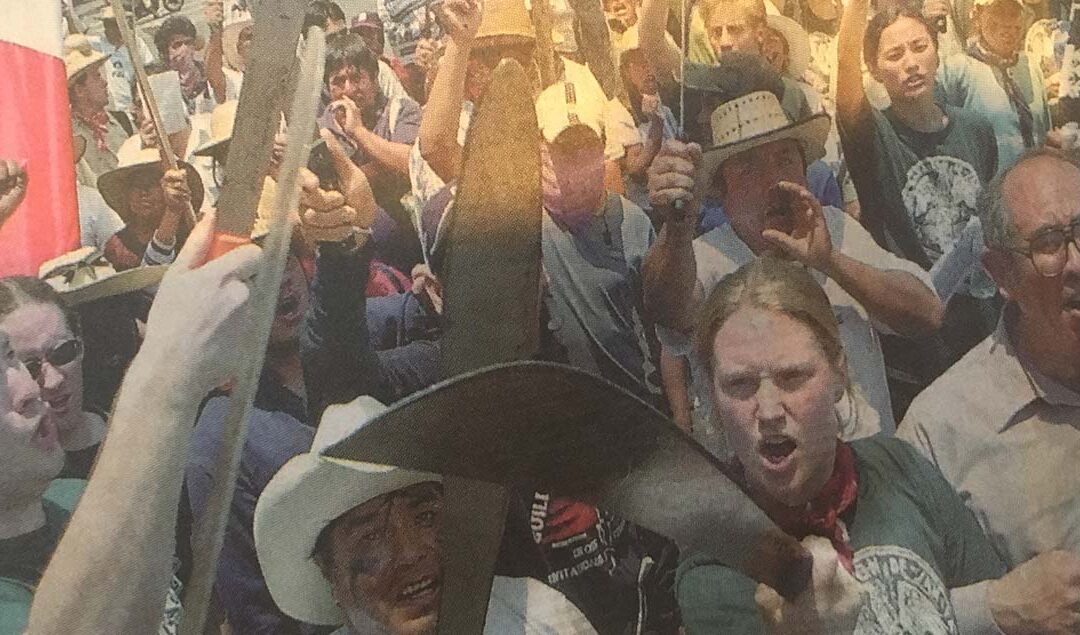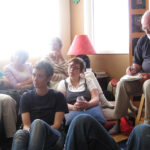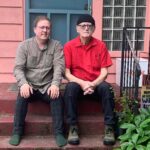By Dan Leahy, February 4, 2007
History First
In the fall of 1990, I attended a strategy session in St. Paul, Minneapolis on how to defeat the proposed free trade agreement between Canada, the United States and Mexico, known as NAFTA, the North American Free Trade Agreement.
I met a man there named Tom Laney. He worked at a Ford production plant in St. Paul and was building relations between his UAW union local and the Ford workers at the Cuautilan plant outside Mexico City who were organizing a union.
Tom told me a story. He said there were a bunch of Irish soldiers who switched sides and fought alongside the Mexican army against the US invasion in 1847. I said I didn’t believe him. He said there was even a large plaque honoring their solidarity in the Plaza de San Jacinto on the outskirts of Mexico City. I still didn’t believe him. I mean, after all, he’s Irish and they are often full of. . . well, stories. I know this is true. I’m Irish. He said he had a photograph of the plaque. I told him to send it to me.
I returned home to Olympia, Washington and to my work at The Evergreen State College as a faculty member and as the Director of the Washington State’s only Labor Education and Research Center.
A few days later, Tom’s photograph arrived. At the top of the plaque was the symbol of the Battalion, a Mexican eagle over a Celtic cross. Under the Battalion symbol, the plaque read:” In memory of the Irish Soldiers of the Heroic Battalion of St. Patrick martyrs who gave their lives in the cause of Mexico during the unjust North American invasion in 1847.” There were 71 names chiseled in stone.
I read those names and Mexico became a different place for me. I had never been to Mexico. I had no desire to be yet another gringo tourist. Now, however, I felt like I had a
real connection, a legitimacy, a reason to go, a place in history. After all, there were no Leahys on that plaque and they must have been there. I needed to do some research.
Researching the Battalion
I asked my staff and students at the Labor Education Center to research the Battalion. They found books, dissertations, essays, novels, and stories. There was history, but like a lot of great history it was buried and out of print.
There were lots of arguments about why the Irish soldiers switched sides. They were Catholics. The Mexicans were Catholic. The US Army was Protestant. They didn’t much care for slavery. Mexico had outlawed it, but the US wanted to expand it by taking Mexican land. Some said it was the brutal treatment in the US army; some said they were drunk; others said it was the senoritas. All those reasons sounded good to me. This war had the highest desertion rate in US history for good reason.
In August, 1991, I flew to Zacatecas, Mexico, for the third round of NAFTA negotiations. It was my first trip to Mexico and much to my surprise I found a town full of cowboys and farmers who looked a lot like my Irish uncles in Eastern Washington, except, of course, Zacatecans spoke Spanish. I also met organizers from an independent labor federation called the FAT which had organized the alternative “peoples forum” that I was attending.
The Labor Center Mission
When I returned from Zacatecas, I organized a Labor Education Center mission to develop relations with the FAT. We arrived in Mexico City in mid-march, 1992, a few days before St. Pat’s Day. There were five of us from the Labor Center, myself, Ellen Shortt, Maryrose Livingston, Kathleen Byrd and Helen Lee. Tom and Barb Laney soon joined us from St.Paul. We were hosted by a cadre of union organizers and Ford workers from the Cuaucitlan plant.
We visited the Museum of Anti-Interventions in Churubusco. The Convento de Churubusco was the site of the last battle of the Battalion in the war of 1847. Outside the walls of the Convento were markers honoring the Battalion. After we toured the museum with its history of foreign invasions, we were walking around outside and discovered a side street, right in front of the museum. It was a street named after “Capitan John O’Reilly, Cmdte, Batallon de San Patricio.” History was coming alive.
Our hosts took us up to San Jancinto Plaza on St. Pat’s Day and Mexican historians told us the Battalion history as we sat in their barracks, now a furniture store. Afterwards, we sat in the Plaza, as our friends played Mexican ballads. Somehow our hosts found a bottle of Jameson and we drank it until the police arrived. They were Irish, though, so we returned to our hotel rather than the police station.
Reviving the Battalion
Once we got back home to Olympia we started to see the Irish every where in Mexican history. I mean not only were there the Battalion members in 1847, but 60 years later there were the great revolutionary heroes like Dorete O’Arango, Emilian O’Zapata, Alvaro O’Brien and the longest lasting of them all, Genoveso de la O! We also heard the descendants of the Battalion had been meeting with the great Lazaro Cardenas just before he nationalized Mexico’s oil on March 18, 1938.
We also noticed that many of the organizers in Canada and the United States who were making alliances with the Mexicans to fight NAFTA were Irish. All the sudden we realized that the Battalion was still alive building links between the two peoples. I mean when our most famous baseball star, Edgar Martinez, opened negotiations with the Seattle Mariners management he reportedly started off by demanding renegotiation of the Treaty of Guadalupe Hidalgo, the treaty that ended the US invasion of Mexico in 1847.
Setting up the Organization
Being organizers, we decided to form one, the Heroico Batallon de San Patricio dedicated to celebrating and expanding the links between the Irish and the Mexicans. We set up a non-profit corporation and opened a bank account. We created stationery with the Battalion symbol and a list of comandantes down the left hand side. We took “Solidaridad por la Libertad de un Pueblo” as our slogan. We printed up and laminated official, wallet sized credentials making us all “comandantes” and stamped “Priority.” We ordered T-Shirts with the Battalion symbol made by Cmdte Ricardo in Minneapolis and developed a book list of required reading.
Then, of course, we made up rules. Comandantes had to have at least four names. Each comandante took on a “cargo” – an area of responsibility – a way of shifting resources from north to south. Comandantes could only show their credentials when necessary and, they needed to attend their daily mass.
Discovering San Patricio/Melaque
For the academic year, 1994-1995, I took a year leave from The Evergreen State College and along with my wife, Bethany Weidner and our two sons, JD Ross and Chad the Rad Kid Queso, left for Zacatecas, Mexico in August, 1994.
Zacatecas is located in north central Mexico, a beautiful old silver mining town. However, the ocean, a necessity for those of us who grew up on Puget Sound, was far away. I checked out the Lonely Planet Guide to Mexico for the nearest town on the Pacific Ocean and it was a place called San Patricio-Melaque in the state of Jalisco, a twelve hour bus trip.
What was more interesting, however, was that the guide book said this town had a ten day celebration leading up to St Patrick’s day and the two towns had originated from two Irish haciendas. There was no doubt in our mind that those Irish haciendas had been started by veterans from the original Battalion.
We immediately switched the site of our gatherings from the Sacred Plague in Mexico City to San Patricio, Jalisco and sent out communiqués to all comandantes (arriba y abajo) to converge on San Patricio ten days before St. Pat’s day, March 17, 1995. Thus began the now historic relationship between the Heroico Batallon de San Patricio and the people of San Patricio/Melaque.
Our First St. Patrick’s Day in San Patrico/Melaque
There were about 15 of us there for St. Pat’s Day 1995. Friends and family came from Washington state. Two Canadians from British Columbia joined us, along with three Icelandic Vikings, Floki, Breki and Steina, from Reykjavik. Two of these Vikings, Breki and Steina, would become famous in Battalion annals for tracking down one of the silver medallion minted in 1960 in honor of the Battalion.
We had lots of fun celebrating our first Saint Patrick’s Day in San Patricio/Melaque and we established a pattern of activity that lasted for the next seven years.
Our Rituals
We found a wonderful hotel, the Puesta del Sol, run by Nacho and Maya Guiterrez that became our headquarters. We attended the evening fire works display in front of the Church on the Plaza de Armas and dodged the “torojito” like everyone else. We marched in the Saint Patrick Day parade proudly wearing our Battalion T-Shirts and carrying the Mexican and Irish flags. We attended mass on St. Pat’s Day where Father Antonio would welcome us.
We also held a communal dinner on the beach at the Terraza Cortez restaurant where we read the names of those who were hung by the US Army and said “Murio por la Patria.”
We drank bottles of Jameson thanks to the sponsorship of Irish Distilleries and their public relations man, Paul Scanlon. (Here, however, we came up with a new rule. Begin drinking Jameson’s during the day and don’t consume it all during the Saint Patrick Day’s dinner.)
Our Swearing In
We also came up with a ceremony as a part of our communal dinner to initiate new Comandantes into the Battalion. Each recruit would have to tell us their four names and their “cargo.” Then, Mary Rose or Marcos Frijolero would hold a hat over their head (sometimes a Malcolm X hat, other times a sombrero), announce their name and all would salute the new Comandante with “Arriba, Abajo, al Centro, al Dentro” while downing “your best shot to be Irish” compliments of Irish Distilleries.
Joint Projects
As participation in our yearly event grew, we began taking our responsibilities to the San Patricio/Melaque community more seriously.
Beginning Efforts
For a couple of years we would have everyone bring down similar things on the plane. One year it was baseball equipment. The next year it was school supplies. We also formed a Mexican civil association, helped fund a health clinic, a mission church and held a book signing event for Patrick Hogan’s, The Irish Soldiers of Mexico.
The Battalion even got in the business of marrying people and organized an elaborate ceremony for the marriage of Cmdte Lawrence Alford and Cmdta Teresa Terran. Lawrence was a Vietnam Veteran living in San Patricio and doubling as St. Patrick himself in the St. Patrick Day’s parade. Teresa Terran was one of the first people we met in San Patricio/Melaque and remains a loyal member of the Battalion to this day.
Also, by 1999, the Battalion was listed as one of the community sponsors of the parade itself.
A New Kiosko
There was an earthquake in October 1995 that cracked many of the buildings in San Patricio/Melaque and destroyed the town’s Kiosko in the center of the town’s plaza. It was this tragedy that bought us into closer and sustained contact with the community.
We met Dr. Maria del Carmen Gonzalez and members of her organization, Grupo Feminino, at our Battalion gathering in 1996. She had detailed plans to rebuild the Kiosko on the town plaza and we pledged to help. Over the next two years, she raised $16,000 and the Battalion contributed a modest $2,000. The new Kisko was completed and opened in March 1998 and much to our surprise there was a beautiful bronze plaque honoring the Battalion’s contribution. History had in fact come alive. We were very proud to be recognized by the community.
An English Language Contest
Our work with Maria del Carmen lead to other projects. Her brother Flavio taught at the local school and we proposed a trip for students who could tell the history of the Battalion in English. The school set up a contest and Battalion members, Tini and Tom from Colorado who ran a biking excursion company, offered a free trip to Ireland for the winners. As it turned out, Ireland was a bit too far for the students, so the Battalion brought the two winners, Ramon and Perla, to Washington State for two weeks of touring and celebrations. Several years later, thanks to the help from Battalion members H Dale and K. Fortin, Ramon graduated in Architecture from the University of Guadalajara and is now a practicing Architect.
The 150th Anniversary (1847-1997): A Letter from the President
We made a great effort to highlight the 150th anniversary of the Battalion, as did the Mexican government which produced a postage stamp in our honor. We mailed postcards to all the educational unions in Mexico inviting them to San Patricio and brought about 50 people to our headquarters at the Puesta del Sol.
However, our greatest accomplishment was when Battalion members in Ireland got Mary Robertson, President of Ireland, to send a letter to the people of San Patricio/Melaque.
She wrote, “The San Patricio Battalion fought with distinction on the side of Mexico and many members of the battalion paid the ultimate price for their bravery. Their participation established a bond of friendship and warmth between the peoples of Mexico and Ireland that lives on to this day. She concluded her letter by writing, “I would like to send my warm good wishes to all those who will gather to reflect on the contribution of this Irish Battalion in San Patricio-Melaque, for a most enjoyable and fruitful celebration.”
A New High School
From our work with Flavio Gonzalez, we met another teacher, Adalberto Vigil, who had a bigger project in mind. He wanted to build a new high school, a Preparatoria, for the kids in San Patricio/Melaque. For several years, there was a community debate about the location of the new high school and the Battalion did its best to stay clear of the controversy. By 1999, the site was chosen and the Battalion was there for the placing of the first stone, but financing still had to be arranged before construction could begin.
The Battalion and Evergreen Students
By the spring of 2000, I felt the Battalion had established itself well enough to organize a joint project with students from my College. I organized a spring class called, The Mexican Nation State. Evergreen students would study Mexican Independence and the Mexican Revolution while traveling for the month of April on the route of Pancho Villa and Emiliano Zapata from Chihuahua to Morelos. We would conclude our travel by participating in the May Day Parade in Mexico City that, among other things, honors the struggle of the American worker for the eight hour day in the late 1880s.
After one month of travel, High School teachers Adalberto and Rosa would organize a one month home stay in San Patricio/Melaque. My students would live for the month of May in the homes of the parents who wanted to build a new high school. In exchange my students would each make a donation to the school construction fund.
The joint project worked so well this first year that we agreed to do this class and home stay again in the spring of 2002.
In the spring of 2002, I was bringing more students to Mexico for a month study of the Mexican Revolution and to San Patricio for another month home stay.
As was my custom, I first delivered the $4000 in home stay funds to the San Patricio High School Construction Fund and then flew to Chihuahua to meet my students and begin our travels. I was supposed to return to San Patricio with my students by early May to participate in the opening of the new High School. The Battalion was by now the largest private donor to new High School.
We didn’t make it. In fact, we were expelled from Mexico on May 2, 2002.
The Battalion and the People of Atenco
As we traveled in Mexico that April, I asked each of my students to develop a research project that they would present to the people of San Patricio/Melaque in their community center at the end of May.
Two of my students were studying the ejido system of communal land ownership in Mexico. While we were traveling, they became interested in the conflict between the Mexican federal government and the people from an ejido called Atenco. The people of this ejido were resisting a federal eminent domain decree condemning their land for a new 11,000 acre, six run way airport on the outskirts of Mexico City.
Just before arriving in Mexico City to participate in the May Day Parade, we had spent four days traveling the route of Emilio Zapata in the state of Morelos and studying his movement’s main contribution to the Mexican Constitution of 1917, mainly the communally owned land system.
Once in Mexico City, the two students went to visit Atenco and came back with an invitation to march with the people of Atenco in the May Day Parade. We agreed and joined them on the broad boulevard of Reforma and entered the narrow street of Madero from which the parade participants pour into Mexico City’s huge square, the Zocolo.
As was our practice when we marched, all my students wore their Battalion T-Shirts with the symbol of the Mexican eagle and the Celtic cross on the front and “San Patricio, Home of the Battalon” on the back.
A month earlier, when we had marched in Hidalgo de Parral, Chihuahua, to honor the local heroine Elissa Grissen for leading the expulsion of General Pershing’s army, we had proudly marched just behind the Mexican army band. And, when we entered the community auditorium, we were greeted as descendants of the original Battalion and applauded for our commitment to Mexico.
When we entered the Zocolo with the people of Atenco on May Day, we received a different welcome. The private television company, Televisa, tried and convicted us on national television for interfering in the internal politics of Mexico. A few of my students were carrying machetes which had been given to them by the farmers and this made sensational photographs in the international press.
The next day, May 2nd, as we traveled toward San Patricio/Melaque to attend the opening of the new High School and begin our home stay, we were taken off the bus by federal police outside Guadalajara and four hours later put on an AeroMexico flight to Los Angeles.
Our official expulsion papers said that we had engaged in activities not allowed by our tourist visas. The “activities” were unnamed. Nevertheless, when we got home, we were asked by College authorities and the Mexican consulate to apologize for “interfering in the internal politics of Mexico”, something we were not formally charged with. We refused.
In a written statement to both the College and Mexican authorities, we apologized for whatever violation of Mexican law we may have committed, but said that while we did not go to Mexico to march with the people of Atenco, we were proud to have done so.
Two months later in August, 2002, the Mexican federal government canceled their plans for an airport on the Atenco land.
The Battalion Continues
Like the original Battalion, the revived Battalion ran into some problems with a Mexican administration. However, the Mexican tradition of hospitality and the Battalion’s commitment to honoring and building links between the Irish and the Mexicans will overcome these problems.
The newly built Kiosko remains central to the social life of San Patricio/Melaque. The new High School opened and students are graduating. Some of Battalion members who were expelled have organized a sustained book drive to provide Spanish language literature to the new High School library. All books are stamped with the Battalion symbol. Battalion members continue their participation in the Saint Patrick’s Day celebrations and are working on new projects with the town. Our attachment to the people of Atenco remains. Land and Liberty is as Irish and it is Mexican.
Dan Leahy
Heroico Batallon de San Patricio
Olympia, Washington
________________________________________________________
The St. Patrick’s Battalion
– a Song by David Rovics, March 2001.
(Copyright David Rovics 2002, all rights reserved)
My name is John Riley
I’ll have your ear only a while
I left my dear home in Ireland
It was death, starvation or exile
And when I got to America
It was my duty to go
Enter the army and slog across Texas
To join in the war against Mexico
It was there in the pueblos and hillsides
That I saw the mistake I had made
Part of a conquering army
With the morals of a bayonet blade
So in the midst of these poor, dying Catholics
Screaming children, the burning stench of it all
Myself and two hundred Irishmen
Decided to rise to the call
From Dublin City to San Diego
We witnessed freedom denied
So we formed the San Patrick Battalion
And we fought on the Mexican side
We marched ‘neath the green flag of Saint Patrick
Emblazoned with “Erin Go Bragh”
Bright with the harp and the shamrock
And “Libertad para Mexicana”
Just 50 years after Wolftone
Five thousand miles away.
The Yanks called us a Legion of Strangers
And they can talk as they may
From Dublin City to San Diego
We witnessed freedom denied
So we formed the San Patrick Battalion
And we fought on the Mexican side
We fought them in Matamoros
While their volunteers were raping the nuns
In Monterey and Cerro Gordo
We fought on as Ireland’s sons
We were the red-headed fighters for freedom
Amidst these brown-skinned women and men
Side by side we fought against tyranny
And I daresay we’d do it again
From Dublin City to San Diego
We witnessed freedom denied
So we formed the San Patrick Battalion
And we fought on the Mexican side
We fought them in five major battles
Churobusco was the last
Overwhelmed by the canons from Boston
We fell after each mortar blast
Most of us died on that hillside
In the service of the Mexican state
So far from our occupied homeland
We were heroes and victims of fate
From Dublin City to San Diego
We witnessed freedom denied
So we formed the San Patrick Battalion
And we fought on the Mexican side



